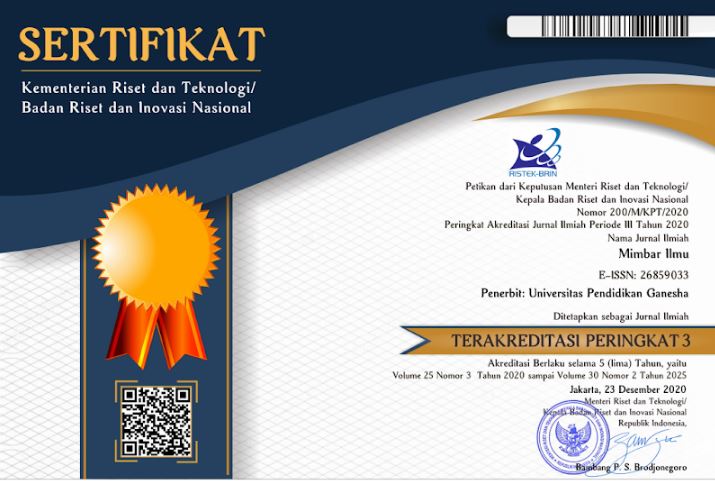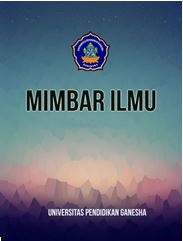Pura Agung Mpu Kuturan: Textual Review and Its Implications in the Formation of Academic Character Based on Ethnopedagogy
DOI:
https://doi.org/10.23887/mi.v29i2.75423Keywords:
Textual Review, Character Education, EthnopedagogyAbstract
One of the efforts to construct local values as a basis for instilling ethno-pedagogical characters is to interpret the character of Mpu Kuturan which is manifested through the construction of the Pura Agung Mpu Kuturan at the Sekolah Tinggi Agama Hindu Mpu Kuturan Singaraja, Bali. This research emphasizes philological studies. The researcher reads various manuscripts about the remains of Mpu Kuturan's knowledge as a cultural heritage in Bali. The context is important to examine because it is useful for providing a textual description, especially the reconstruction of local values to be used as a reference for pedagogical values. The stages of the Pura Agung Mpu Kuturan ceremony contain academic values based on ethnopedagogy. First, Melasti Segara and Mapekelem-Mapapada Wewalungan Tawur, meaning the construction of eco-pedagogical values and critical learning media, because they are the personification of the universe. Second, Nyenuk, Ngamargiang Kekundang, Ngaturang Guru lan Bendu Piduka/Ngrsi Bojana, meaning the construction-systematization of the thinking process. This ceremony is carried out by personifying the Panca Dewata: east/Isvara, south/Brahma, west/Mahadeva, north/Vishnu and center/Shiva. The symbolization of colors and the placement of gods in various directions symbolically signify the thinking ability of a learner or academic must be adjusted to the situation and conditions or social gradation of each diverse society. Third, Nangun Ayu-Makebat Daun, as a constructive symbol of metacognitive thinking - open. Makebat daun means opening up a new life or hope. If interpreted, the procession of the ceremonies above is the result of human creativity (as homo-esparan) to visualize or personify the form and presence of God which is abstract in nature into a concrete form. Or in other words, the Hindu religious ritual is a stimulant for learners in describing and contextualizing complex things into simple forms.
Published
How to Cite
Issue
Section
License
Copyright (c) 2024 I Nyoman Suka Ardiyasa , Made Ferry Kurniawan

This work is licensed under a Creative Commons Attribution-ShareAlike 4.0 International License.
This work is licensed under a Creative Commons Attribution-ShareAlike 4.0 International License.
Authors who publish with this journal agree to the following terms:
- Authors retain copyright and grant the journal right of first publication with the work simultaneously licensed under a Creative Commons Attribution License that allows others to share the work with an acknowledgment of the work's authorship and initial publication in this journal.
- Authors are able to enter into separate, additional contractual arrangements for the non-exclusive distribution of the journal's published version of the work (e.g., post it to an institutional repository or publish it in a book), with an acknowledgment of its initial publication in this journal.
- Authors are permitted and encouraged to post their work online (e.g., in institutional repositories or on their website) prior to and during the submission process, as it can lead to productive exchanges, as well as earlier and greater citation of published work.








